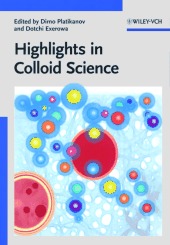Journal list menu
Export Citations
Download PDFs
Cover Picture
Cover Picture: Photoprogrammable Organic Light-Emitting Diodes (Angew. Chem. Int. Ed. 22/2009)
- Page: 3883
- First Published: 12 May 2009

Programmable organic light-emitting diodes: UV irradiation converts an oxetane-functionalized dithienylethene derivative from its colorless open form into a dark blue closed form, while visible light reverses the reaction. In the Communication on page 4038 ff., K. Meerholz and co-workers describe a reversibly switchable organic light-emitting diode based on this principle.
Inside Cover
Inside Cover: Switching the Chirality of Single Adsorbate Complexes (Angew. Chem. Int. Ed. 22/2009)
- Page: 3884
- First Published: 12 May 2009

Wrong handedness? No problem! K.-H. Ernst et al. describe in their Communication on page 4065 ff. how the chirality of single adsorbates can be switched into the opposite enantiomeric state. By using inelastically tunneling electrons from the tip of a scanning tunneling microscope in an ultra-high vacuum, certain molecular vibrations are excited that, in turn, cause different actions such as hopping, rotation, and chirality conversion at the surface.
Graphical Abstract
Corrigendum
Pseudo-Bridging Silanols as Versatile Brønsted Acid Sites of Amorphous Aluminosilicate Surfaces†
- Page: 3896
- First Published: 14 May 2009
News
Spotlights on our sister journals: Angew. Chem. Int. Ed. 22/2009
- Pages: 3898-3899
- First Published: 12 May 2009
Author Profile
News
Materials Science: L'Oréal–UNESCO Prizes to A. Kobayashi, E. Kumacheva, and T. Nyokong
- Page: 3901
- First Published: 12 May 2009
Book Reviews
Highlights in Colloid Science.Edited by D. Platikanov and D. Exerowa.
- Page: 3902
- First Published: 12 May 2009
Metal Oxide Catalysis.1+2. Edited by S. David Jackson and Justin S. J. Hargreaves.
- Pages: 3902-3903
- First Published: 12 May 2009
Highlights
Heterogeneous Catalysis
Probing Solid Catalysts under Operating Conditions: Electrons or X-rays?†
- Pages: 3904-3907
- First Published: 12 May 2009

Seeing is believing: In light of recent advances, the pros and cons of using electrons and X-rays for in situ studies of catalysts are analyzed: by using X-rays the structure of bound reactants at steady state are obtained from extended X-ray adsorption fine structure spectroscopy (EXAFS) data (see graph), thereby affording mechanistic insights.
Single-Molecule Studies
Light at the End of the Tunnel
- Pages: 3908-3910
- First Published: 12 May 2009

Turn the light on: The synthesis, folding and maturation kinetics of individual green fluorescent protein (GFP) molecules have been studied using a cell-free transcription–translation system and single-molecule fluorescence. Ribosomes, which were labeled with a red fluorophore and tethered to a glass surface, were used to synthesize GFP Emerald molecules that become fluorescent after maturation.
Conducting Oligomers
High Electrical Conductance of Single Molecules: A Challenge in the Series of Conjugated Oligomers
- Pages: 3911-3913
- First Published: 12 May 2009

En route to molecular electronics: As extended, conjugated oligomers are desirable for molecular electronics, their electrical conductance should display a low attenuation factor. Zinc-complexed oligo(ethynyleneporphyrindiylethynylene)s have been prepared that are distinguished by ultralow attenuation factors in single-molecule conductance.
Minireview
Biopolymers
Chemical and Structural Diversity in Eumelanins: Unexplored Bio-Optoelectronic Materials†
- Pages: 3914-3921
- First Published: 12 May 2009

A black whole: The black insoluble biopolymer eumelanin is prepared through the oxidative polymerization of 5,6-dihydroxyindoles (see scheme). It has a largely unknown heterogeneous structure and unique optoelectronic properties. Current structural models are presented and possible applications are discussed.
Review
Supramolecular Chemistry
Binding Mechanisms in Supramolecular Complexes
- Pages: 3924-3977
- First Published: 12 May 2009

Forces to reckon with: Supramolecular complexes, such as the one shown, are normally based on a combination of different interactions such as ion pairing, hydrogen bonds, and stacking interactions. The not always simple characterization of the nature and strength of intermolecular forces provides assistance to the understanding of biomimetic systems, as well as for the design of synthetic receptors, drugs, and intelligent materials.
Communications
Emulsions
The Colloidal Suprastructure of Smart Microgels at Oil–Water Interfaces†
- Pages: 3978-3981
- First Published: 12 May 2009

Oil on troubled waters: Stimuli-sensitive emulsions have been used to prepare temperature- and pH-responsive microgels. The emulsion stability at oil–water interfaces is not governed by the particle packing density, and structural changes induced by the interface lead to connections between the individual microgels (see picture; scale bar 1 μm), which behave very differently compared to solid-particle-stabilized emulsions.
Heterogeneous Catalysis
Direct CC Cross-Coupling of Secondary and Primary Alcohols Catalyzed by a γ-Alumina-Supported Silver Subnanocluster
- Pages: 3982-3986
- First Published: 12 May 2009

Let's drink to that! Two alcohols (one primary and one secondary) can be coupled in an atom-efficient process by a hydrogen-autotransfer catalytic system in the form of silver subnanoclusters supported on γ-Al2O3. The recyclable heterogeneous catalyst promoted the one-pot CC cross-coupling in the presence of a catalytic amount of the weak base Cs2CO3 (see reaction mechanism).
Biofuels
Highly Selective Catalytic Conversion of Phenolic Bio-Oil to Alkanes†
- Pages: 3987-3990
- First Published: 12 May 2009

Oil and water: A new energy-efficient and atom-economical catalytic route for the production of alkanes and methanol by upgrading the phenolic fraction of bio-oil has been developed. The one-pot aqueous-phase hydrodeoxygenation process is based on two catalysts facilitating consecutive hydrogenation, hydrolysis, and dehydration reactions.
Nanostructures
One-Step Synthesis and Characterization of Gold–Hollow PbSx Hybrid Nanoparticles†
- Pages: 3991-3995
- First Published: 12 May 2009

Turing lead into gold: Hollow hybrid PbSx–Au nanostructures of about 10 nm in diameter were synthesized using a one-step reaction under mild experimental conditions. The redox reaction of gold precursors with PbS nanocrystals in the presence of dodecylamine leads to the hollow feature of hybrid nanostructures (see picture).
Lead Sensors
CH Activation
Platinum(II)-Catalyzed Intramolecular Cyclization of o-Substituted Aryl Alkynes through sp3 CH Activation†
- Pages: 3999-4001
- First Published: 12 May 2009
Phospholes
A Convenient Method for the Synthesis of α-Ethynylphospholes and Modulation of Their π-Conjugated Systems†
- Pages: 4002-4005
- First Published: 12 May 2009

Mind the (narrow) gap: α-Ethynylphospholes generated in situ from the corresponding silyl-capped precursors were converted into a series of α-(arylethynyl) phospholes bearing functional substituents as well as an α,α′-linked terphosphole (see scheme). The terphosphole has a narrow HOMO–LUMO gap owing to efficient π conjugation over the three phosphole rings.
Diazonium Chemistry
In Situ Formation of Diazonium Salts from Nitro Precursors for Scanning Electrochemical Microscopy Patterning of Surfaces†
- Pages: 4006-4008
- First Published: 12 May 2009

Give me a tip: In situ production of diazonium salts from nitro compounds allows the use of diazonium chemistry for microelectrochemical patterning of surfaces by scanning electrochemical microscopy. The nitro precursor is reduced at the tip to the amine, which is diazotized in the interelectrode space as it diffuses (see picture). The tip acts as a source of diazonium salts, allowing sample derivatization just beneath the tip.
Boron Heterocycles
9-Boraanthracene Derivatives Stabilized by N-Heterocyclic Carbenes†
- Pages: 4009-4012
- First Published: 12 May 2009
Cluster Chemistry
Continuous-Flow Synthesis
Multistep Synthesis Using Modular Flow Reactors: Bestmann–Ohira Reagent for the Formation of Alkynes and Triazoles†
- Pages: 4017-4021
- First Published: 12 May 2009

Multistep in flow: The Seyferth–Gilbert reagent 1 has been applied in a flow system to rapidly synthesize terminal alkynes. The system has been further applied to synthesize triazole 3 from alcohol 2 in a three-step oxidation/homologation/copper(I)-catalyzed azide–alkyne cycloaddition sequence without isolation of intermediates (see scheme).
Organic Electronics
Interactive Radical Dimers in Photoconductive Organic Thin Films†
- Pages: 4022-4024
- First Published: 12 May 2009

Fully interactive: Overlap between extended unoccupied molecular orbitals leads to the high photoconductivity of interactive radical dimers. Sandwich-type cells (see picture; ITO=indium tin oxide) comprising highly oriented thin films of a disjoint diradical, 4,4′-bis(1,2,3,5-dithiadiazolyl) (BDTDA) exhibit a photocurrent with a high on/off ratio at reverse bias voltages and photovoltaic behavior at zero bias voltage.
Self-Assembled Cages
Computer-Aided Design of a Sulfate-Encapsulating Receptor†
- Pages: 4025-4029
- First Published: 12 May 2009

Custom built: A promising new approach towards more efficient self-assembled cage receptors through computer-aided design is demonstrated. The resulting M4L6 tetrahedral cage, internally functionalized with accurately positioned urea hydrogen-bonding groups (see structure; yellow: predicted, blue: experimental, space-filling: SO42−), proved to be a remarkably strong sulfate receptor in water.
Glycobiology
Metabolic Labeling of Sialic Acids in Living Animals with Alkynyl Sugars†
- Pages: 4030-4033
- First Published: 12 May 2009

Sialome sweet sialome: As sialic acids are involved in many host–pathogen recognition events and are markers of embryonic and malignant tissues, there is great interest in methods for the enrichment and identification of sialylated glycoproteins from complex tissues. Now N-(4-pentynoyl)mannosamine can be used to metabolically label sialylated glycoproteins in living animals, enabling future identification of new biomarkers.
Fluorescent Probes
A Highly Sensitive Fluorescence Probe for Fast Thiol-Quantification Assay of Glutathione Reductase†
- Pages: 4034-4037
- First Published: 12 May 2009
OLEDs
Photoprogrammable Organic Light-Emitting Diodes
- Pages: 4038-4041
- First Published: 12 May 2009

Enlightening the memory: The integration of a crosslinkable photochromic dithienylperfluorocyclopentene (DTE) into organic light-emitting diodes (OLED) allows for the individualization of the emissive area of the OLED device, for example, for signage applications. The operation principle is based on switching the injection barrier for holes (positive charge carriers). Very large ON/OFF ratios of up to 3000 for current as well as electroluminescence have been achieved.
Organic–Inorganic Materials
Light Harvesting by a Periodic Mesoporous Organosilica Chromophore†
- Pages: 4042-4046
- First Published: 12 May 2009

Light aqueduct: Periodic mesoporous organosilica exhibits strong light absorption due to densely packed organic chromophores within the pore walls. Light energy absorbed by 125 biphenyl groups in the pore walls is funneled into a single coumarin 1 molecule in the mesochannels with almost 100 % quantum efficiency, and results in significant enhancement of emission from the coumarin 1 dye.
DNA Binding
“On-Off” Multivalent Recognition: Degradable Dendrons for Temporary High-Affinity DNA Binding†
- Pages: 4047-4051
- First Published: 12 May 2009

Now you bind it—now you don't! Chemical degradation of a dendritic scaffold allows multivalent interactions with DNA to be “switched off” as the multivalent array of ligands breaks down into smaller fragments, offering an approach by which a molecule can be temporarily endowed with high affinity for a biological target—an important concept in the development of new synthetic systems to intervene in biological pathways.
Expanded Genetic Code
A Facile System for Encoding Unnatural Amino Acids in Mammalian Cells†
- Pages: 4052-4055
- First Published: 12 May 2009

A shuttle system has been developed to genetically encode unnatural amino acids in mammalian cells using aminoacyl-tRNA synthetases (aaRSs) evolved in E. coli. A pyrrolysyl-tRNA synthetase (PylRS) mutant was evolved in E. coli that selectively aminoacylates a cognate nonsense suppressor tRNA with a photocaged lysine derivative. Transfer of this orthogonal tRNA–aaRS pair into mammalian cells made possible the selective incorporation of this unnatural amino acid into proteins.
RNA–Peptide Conjugates
Non-Hydrolyzable RNA–Peptide Conjugates: A Powerful Advance in the Synthesis of Mimics for 3′-Peptidyl tRNA Termini†
- Pages: 4056-4060
- First Published: 12 May 2009

Translation of specific small peptides on the ribosome can confer resistance to macrolide antibiotics. To reveal the molecular details of this and related phenomena, stable RNA–peptide conjugates that mimic peptidyl-tRNA would be desirable, especially for ribosome structural biology. A flexible solid-phase synthesis strategy now allows efficient access to these highly requested derivatives without restriction on the RNA and peptide sequences.
Single-Molecule Manipulation
Chirality Change of Chloronitrobenzene on Au(111) Induced by Inelastic Electron Tunneling†
- Pages: 4061-4064
- First Published: 12 May 2009

Chirality chameleon: Inelastic electron tunneling manipulation can be used to change a single chloronitrobenzene (ClNB) molecule, randomly adsorbed on Au(111), into its desired enantiomeric form (r or l, see STM images and ball-and-stick representation) and to vary its rotational orientation. The different threshold voltages for chirality change (260 mV) and rotation (380 mV) allow these processes to be induced separately.
Chirality
Switching the Chirality of Single Adsorbate Complexes†
- Pages: 4065-4068
- First Published: 12 May 2009

Pumped up: Propene molecules form chiral complexes when adsorbed on a copper surface. Inelastically scattered tunneling electrons from the tip of a scanning tunneling microscope induce rotation or diffusion of the adsorbate on the surface. Higher tunneling currents can lead to conversion of the adsorbate into the opposite enantiomer.
Silaselenones
A Bis(silaselenone) with Two Donor-Stabilized SiSe Bonds from an Unexpected Stereoconvergent Hydrolysis of a Diselenadisiletane†
- Pages: 4069-4072
- First Published: 12 May 2009

SiSe matters: Diselenadisiletane 2, formed from direct reaction of a racemic silylene 1 with elemental selenium, gives the first bis(silaselenone) upon hydrolysis with water (3; see picture, C gray, H white, N blue, O red, Se purple, Si green; d(SiSe)=215 pm). The reaction is stereoconvergent: only racemic forms of 3 are obtained from a mixture of racemic and meso forms of 2.
















































